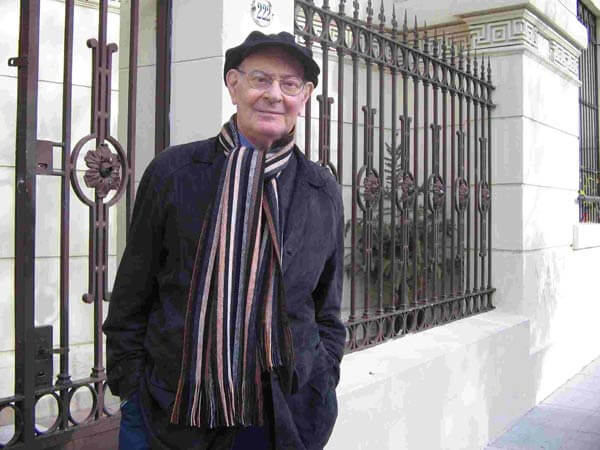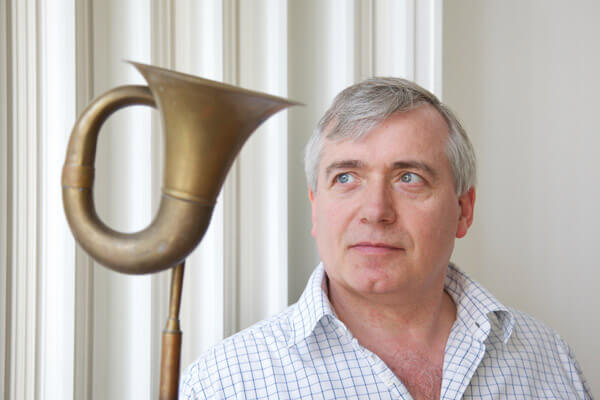 The London Sinfonietta gave an exceptional – though unfortunately rather lightly attended – performance of Mauricio Kagel‘s The Pieces of the Compass Rose in Queen Elizabeth Hall at Southbank Centre, London, on Saturday, 1 May 2013. The Sinfonietta is currently showing an exciting commitment to the larger scale classics of the 20th Century (both Karlheinz Stockhausen’s Gruppen and Georg Friedrich Haas’ in vain are scheduled for London performance in the fall of 2103). Saturday’s performance gave the audience a rare opportunity to consider Kagel’s sizable work in its entirety.
The London Sinfonietta gave an exceptional – though unfortunately rather lightly attended – performance of Mauricio Kagel‘s The Pieces of the Compass Rose in Queen Elizabeth Hall at Southbank Centre, London, on Saturday, 1 May 2013. The Sinfonietta is currently showing an exciting commitment to the larger scale classics of the 20th Century (both Karlheinz Stockhausen’s Gruppen and Georg Friedrich Haas’ in vain are scheduled for London performance in the fall of 2103). Saturday’s performance gave the audience a rare opportunity to consider Kagel’s sizable work in its entirety.

Composer Mauricio Kagel (photo credit: tiempodemusica.com.ar)
Every player on stage, along with conductor Thierry Fischer, could be singled out for a truly fantastic performance. Particularly inspired were first violinist Alexandra Wood – who played her many solos with a wide range of character, colour, and especially subtle and intimate pianissimos – and, of course, percussionist David Hockings. The Pieces of the Compass Rose calls for a very large number of percussion instruments, and Hockings played the role of water-pourer, styrofoam breaker, axe-wielder and so on with all the necessary character and straight-faced humour that one could possibly hope for. What such a first-rate performance laid bare, however, were a number of deep fault lines in the conception and execution of Kagel’s work that left me somewhat less convinced than I had previously been in hearing only excerpted movements.
Kagel’s eight movements (composed between 1988 and 1994) are named after the principal directions of the compass rose (the Sinfonietta played them: East, South, South-West, North, North-West, South-East, North-East, and West.) This is a beautiful idea in concept, but it is undermined in its realization by Kagel’s decision to take a shifting viewpoint in each movement. That is, he does not stand firmly in Argentina and first look East, then South, then South-West, etc. Rather, he allows himself to move from place to place in imagining each new movement. Kagel grew up in Argentina before moving to Köln in 1957, and he travelled a great deal throughout his life, so his conception does feel authentic. Unfortunately, it feels much less creatively fertile in practice than a more grounded perspective might have provided.
Consider Kagel’s rose (constructed from his programme notes):

What is immediately obvious is that Kagel’s rose, taken as a whole, is really no rose at all. Two opposing directions (North-West and South-East) both point toward South America (as does, for that matter, North-East). Kagel’s idea is then further diluted by the fact that all but a few musical references are obtuse and/or deeply embedded into Kagel’s score. All eight movements do remain constant in their included ‘western’ instruments: clarinet, two violins, viola, cello, doublebass, piano and harmonium, while each piece finds the percusionist behind a new array of instruments. This then, becomes the crux of the question in hearing the whole work at once: considering the non-directional rose and (mostly) non-referential music, does this movement of the percussionist really create new, highly-characterised sound worlds?
When played on their own it might be said that one or two of the movements (in particular West, with its harmonica and wood-chopping) do create a vivid world for the listener to step into. The music that has most stayed with me since the performance came in South-West, where a haunting double bass solo finds an unusual accompaniment in soft tremolos and harmonics in the strings that rise up and fade away while the percussionist pours water into a bucket from roughly shoulder height. Even here, though, it is clear that the other instruments are somewhat dissociated from what the percussionist is doing. The continually shifting percussion backdrop — here a log drum, there rustling pieces of paper; here a tam-tam, there a harmonica — become a sort of ever shifting shade of gray that fails to really colour the overpoweringly westernised ensemble in any convincing or coherent way.

David Hockings, principal percussionist of the London Sinfonietta (Image © Briony Campbell)
All this means that the experience of hearing these pieces one after another has very little to do with travel or direction, but instead mostly abstraction and a rather confused sort of stasis. I wonder, too, if this explains some of the many early exists that took place from this concert. Even with a programme note in hand and being a relative insider to this music, I found myself impressed with the performance, but altogether more frustrated than charmed by the music. The concert was already ambitious and long, but how much more might have been brought to this piece had the Sinfonietta stretched a little bit further to offer a creative a narrative or employ an animateur in presenting the evening? Though I doubt it would have covered over all of these troubling questions, this is an event that really would have benefited from some presentation alongside the outstanding performance.






















